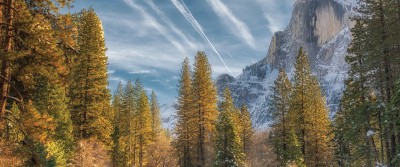A Century of Preserving Our National Treasures

By Christina Phillis
This year marks the 100th anniversary of the National Park Service (NPS), and special events are taking place across the country — or, as the song says, “From the redwood forest, to the gulf stream waters.” With more than 400 NPS sites spanning 84 million acres, ranging from battlefields and monuments to parks, seashores and rivers, you truly can choose your own adventure. There are also a variety of centennial programs throughout the year designed to help you get involved and help keep the NPS around for another 100 years.
History
Yellowstone was the first when Congress named it a national park on March 1, 1872. As more and more national parks were established, the need grew for one unified governing agency to oversee them all. On August 25, 1916, Woodrow Wilson signed the Organic Act, which established the National Park Service as a new federal bureau in the Department of the Interior. Its mission was simple: to preserve and protect the then 35 national parks and monuments and those yet to be established so they would be left “…unimpaired for the enjoyment of future generations.”
Commemorations
To commemorate the 100th anniversary of the NPS, the U.S. Mint struck and issued three gold coins. The surcharges from these coins must be paid to the National Park Foundation to help fund projects that preserve and protect its resources.
The gold coins are clad with images of two instrumental conservationists: Theodore Roosevelt and John Muir. Muir helped to establish Yosemite National Park and published many books on conservation and natural wonders, including “Our National Parks.” And during his time as president, Roosevelt created the United States Forest Service and established 150 national forests, 51 federal bird reserves, 4 national game preserves, 5 national parks, and 18 national monuments.
Centennial Programs
Starting with the 2015-2016 school year, fourth graders and their families were given free access to hundreds of parks, lands, and waters through the Every Kid in a Park Program. Students and fourth-grade educators, on behalf of their students, can print out a paper pass for free access by visiting www.everykidinapark.gov. The site also offers advice for planning your trip, including finding places to visit, as well as overnight accommodations, and a packing list.
As a way to inspire more people to connect to America’s parks, the NPS also kicked off the Find Your Park Movement. You can join it by visiting www.findyourpark.com, where you can locate parks near you and share your story. You can also get involved on social media by using #findyourpark.
Looking to the Future
Although the NPS has much to celebrate this year, there are still challenges that lie ahead. David Barna, the public affairs chief for the NPS, told National Geographic, “One of the greatest challenges we face is in making the National Park Service relevant to all Americans.” The NPS is addressing this challenge with its Urban Agenda Program, which asks parks and cities to rethink how to connect with Urban America. People living in these areas don’t always have the means to visit one of the many awe-inspiring parks, so the NPS hopes to offer populations in these areas access to nature through the development of innovative, new spaces.
The NPS is responding to not only the changing American culture, but also our changing planet. Roosevelt was prescient when he said, “…the time has come to inquire seriously what will happen when our forests are gone, when the coal, the iron, the oil, and the gas are exhausted, when the soils have still further impoverished and washed into the streams, polluting the rivers, denuding the fields and obstructing navigation.” We now know that climate change has the power to alter the ecology of many parks. Extended droughts, fire seasons, low-flow rivers, and rising air and water temperatures can cause certain species of animals and plants to either adapt or die. Barna notes that peer-reviewed science will be instrumental in dealing with climate change.
The NPS is optimistic that much of its future success will come from the 22,000 people it employs as well as the 221,000 volunteers who donate their time and money every year. And what a glorious green 100th year it’s shaping up to be for America’s treasured national parks!
CLASSROOM DISCUSSION
Go to www.findyourpark.com and find a park that you would like to visit.
How can science be used to deal with climate change?
VOCABULARY
- Conservation
- Unimpaired
- Preserve
- Centennial
- Urban
- Ecology